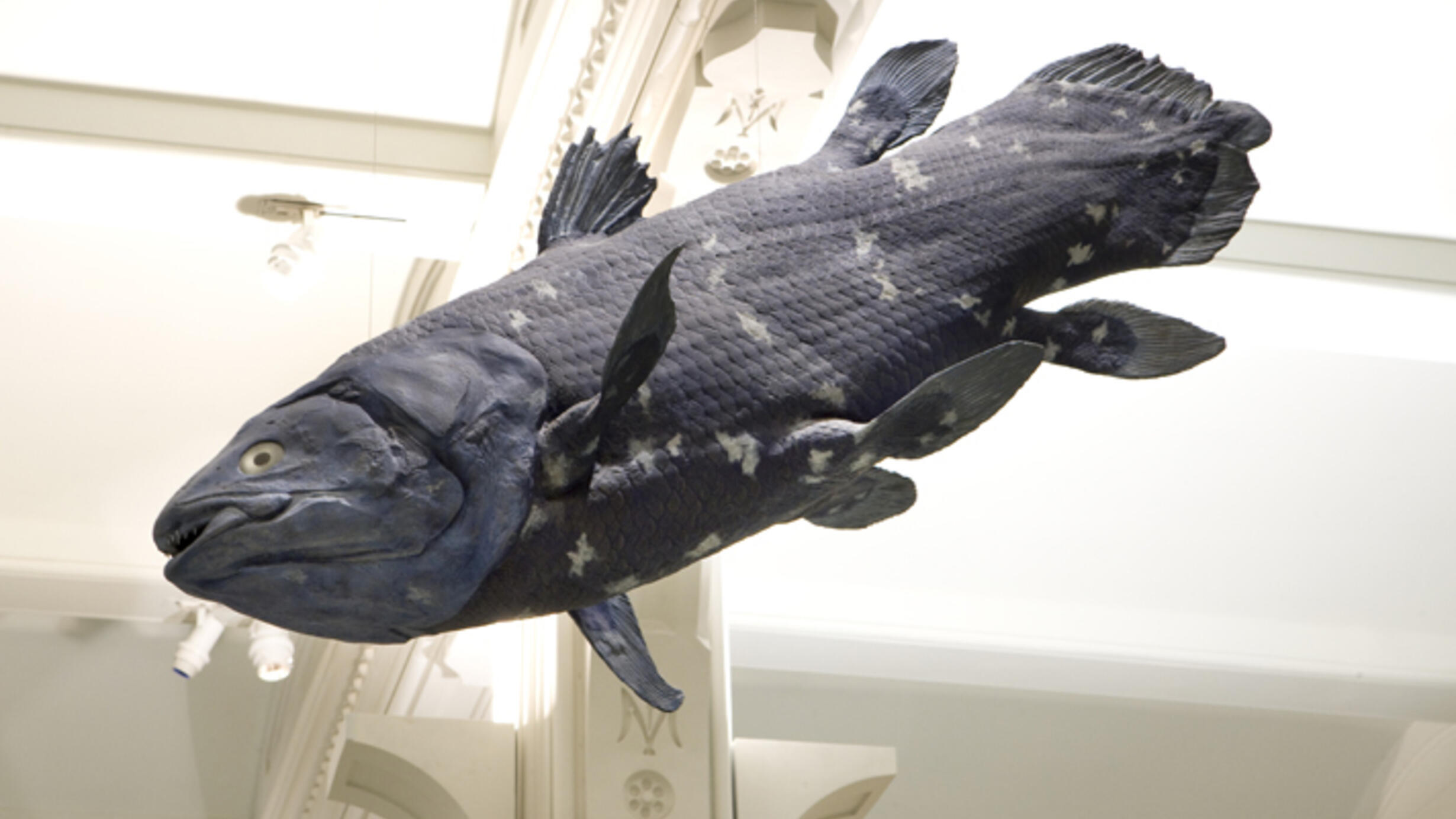Coelacanth
Part of Hall of Vertebrate Origins.
Part of Hall of Vertebrate Origins.

Coelacanths were thought to have disappeared from the fossil record about 70 million years ago, but in 1938 a fisherman caught a living coelacanth off the coast of South Africa. About 200 more specimens have been found in the western Indian Ocean since then.
These ancient "fish" are actually more closely related to land animals. The specimen's paired fins are lobelike and have joined bones, like arms and legs.